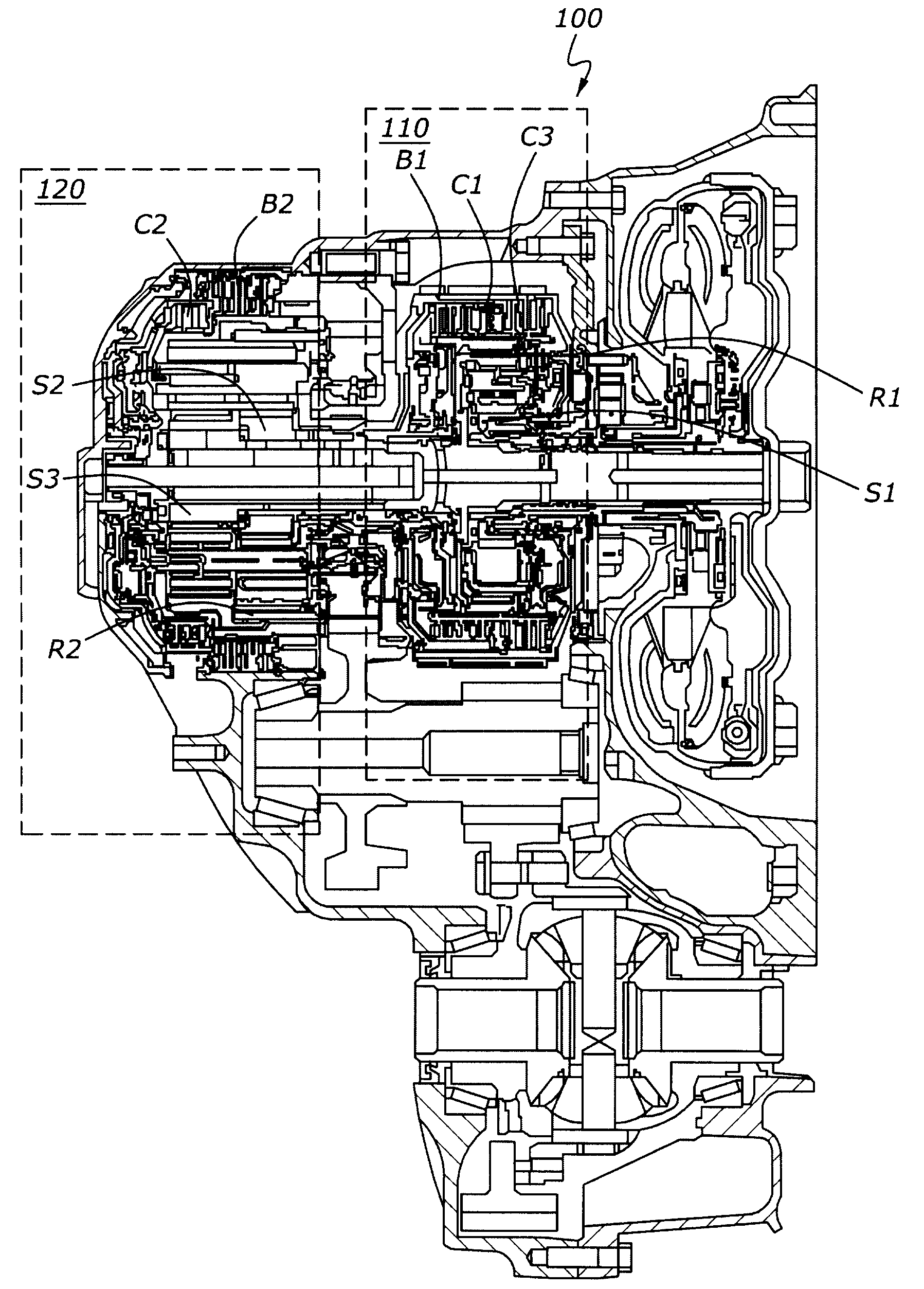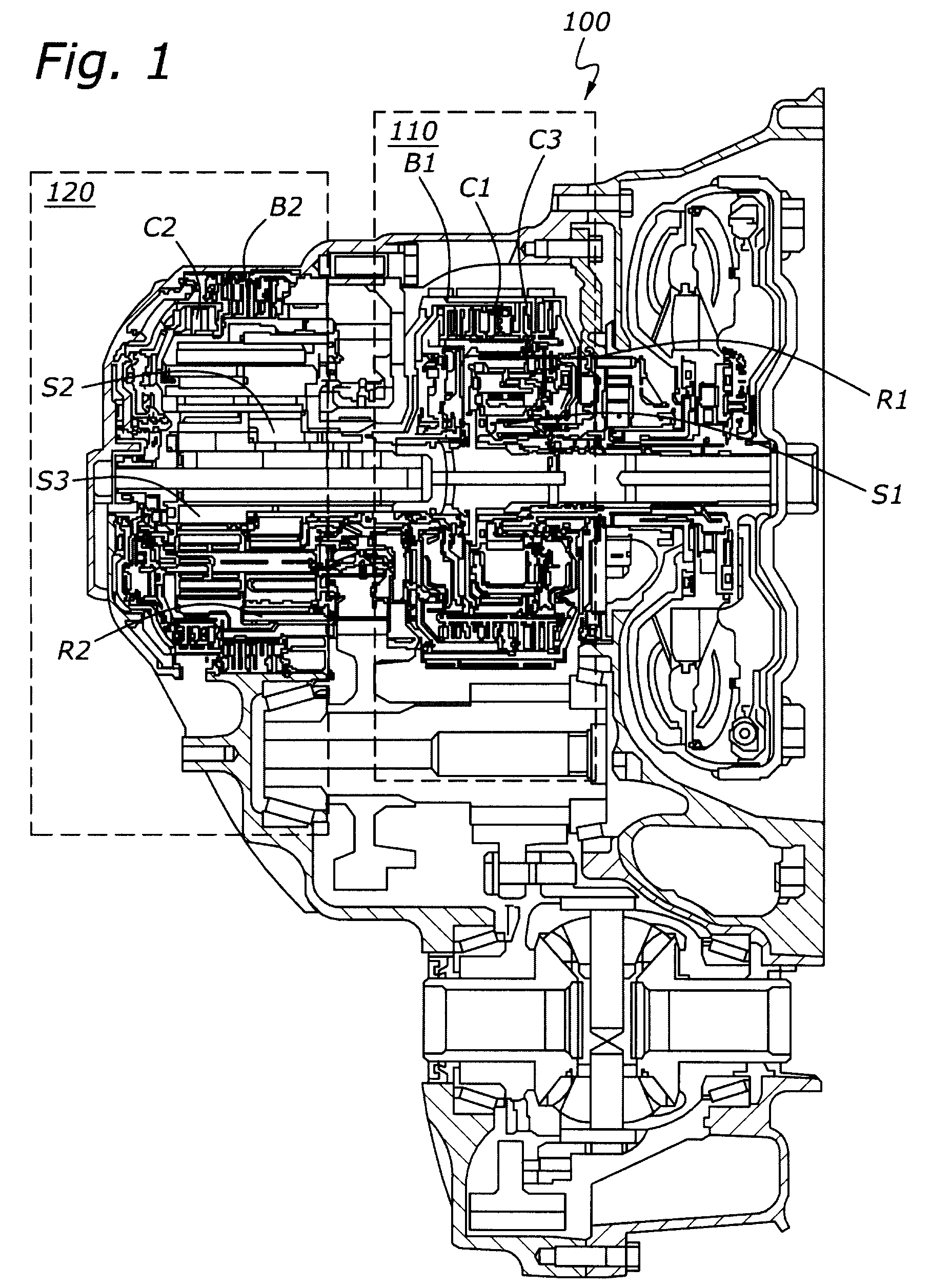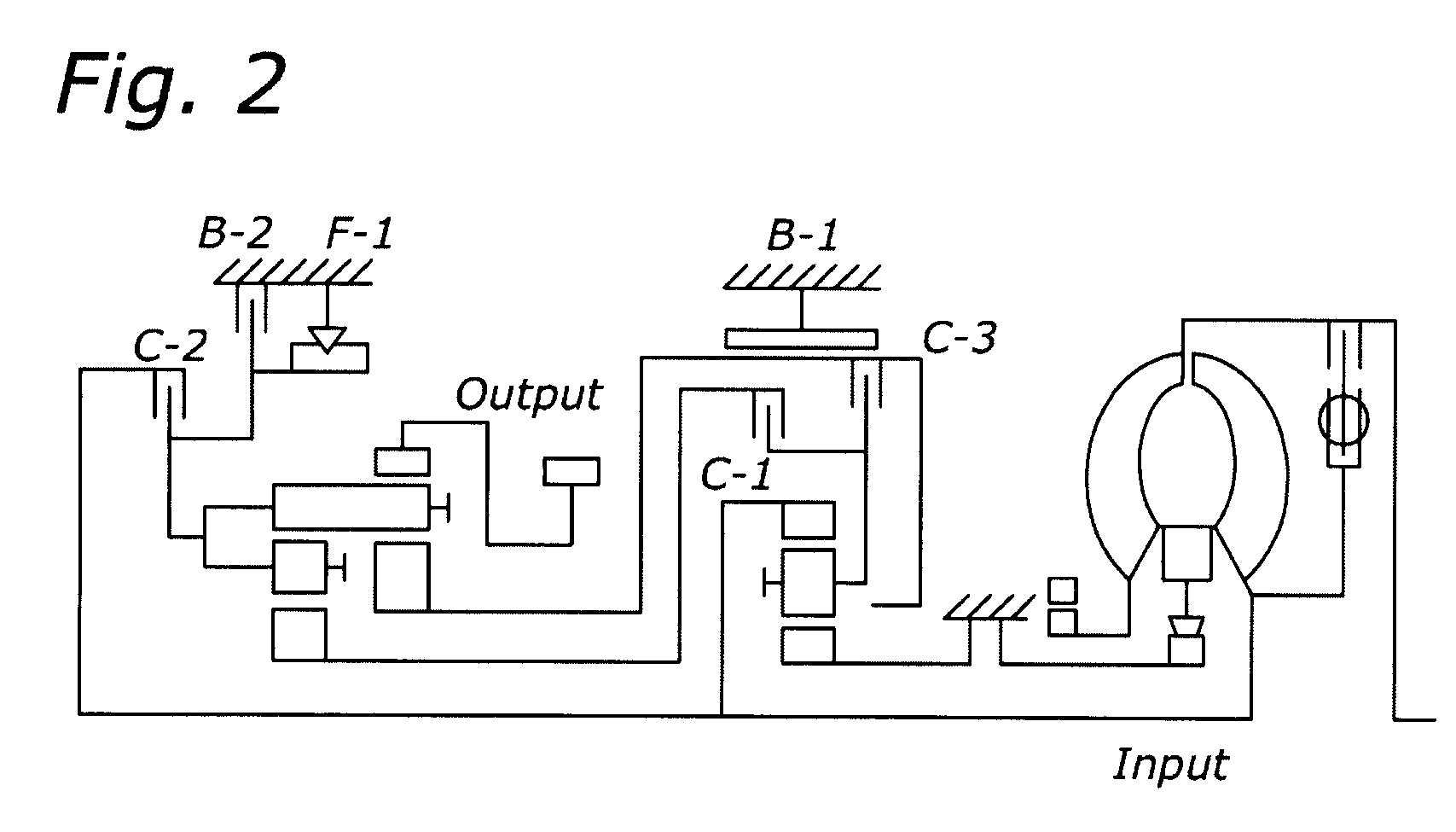[0009]According to a preferred embodiment of the invention the actuation of the brake band and the brake
coupling is maintained until the
turbine speed is zero. This serves in particular to avoid an otherwise frequently observed and unwanted forwards movement of the vehicle on leaving the idling mode of operation, which is also referred to as “neutral idle exit jerk” and which derives from the
inertial effect of a rapid turbine
speed reduction, shortly before the
internal combustion engine begins to generate the drive torque. A braking of the
moment of inertia of the turbine leads to an acceleration of the
moment of inertia of the vehicle, if the two are engaged via the input clutch. According to the invention this effect is avoided if the brake band and the brake coupling remain actuated until the turbine speed is zero rpm. Since there is not yet any clutch connection between the turbine and the vehicle during this braking phase, a further positive effect is that the input clutch can be swiftly locked without any further control, which gives the vehicle a more rapid starting facility. According to the aforementioned preferred embodiment of the invention, therefore, the inertial torque is supported by the brake band and the brake coupling, since remain actuated until the turbine speed is zero.
[0010]According to a further preferred embodiment the turbine is rotated for at least some of the time during the simultaneous actuation of the brake band and the brake. This rotation of the speed the turbine may be performed, in particular, at a speed which is 80 to 100 rpm, preferably about 90 rpm, lower than the idling speed of the internal
combustion engine. The input shaft and the turbine therefore have the facility to rotate, which allows a
low input torque. The rotating turbine also means that the vibrations occurring on the engine support bracket are also low. Due to the low loads acting on the engine support bracket and the low engine vibrations, the “
noise, vibration and
harshness” (NVH) effects can also be substantially reduced or minimized. In the same way any unwanted acceleration from rest can be prevented and any starting
delay minimized.
[0011]According to a further preferred embodiment a clutch is provided for coupling a
planet carrier of the single-stage planetary gear
train to the small sun gear of the two-stage planetary gear
train, the simultaneous actuation of the brake band and the brake coupling occurring at least some of the time with the clutch slipping. This slipping input clutch means that the engine torque can be low. The output torque is zero, and the loads acting on the engine support bracket are low.
[0012]According to a further preferred embodiment of the invention the input clutch is temporarily fully opened, in order to allow a slight rotation of gear wheels of the two-stage planetary gear train, and thereby to remove any residual loads from the shift position preceding the “NIC” by relieving the axle half-shafts acting as torsion springs.
[0013]According to a further preferred embodiment of the invention the simultaneous actuation of the brake band and the brake coupling occurs only when the vehicle is stationary. In particular, an enhanced safeguard against accidental locking of the transmission gear wheels at high vehicle speeds is preferably achieved, which as explained below can be obtained by a dual or redundant monitoring of the output speed.
[0014]Here a sensor device, which generates a sensor
signal only when the vehicle is stationary, is preferably used in order to ensure that a simultaneous actuation of the brake band and the brake coupling occurs only when the vehicle is stationary. This has the
advantage that in order to provide the safeguard function a simultaneous activation of the brake band and the brake coupling can be prevented even in the event of a defective speed sensor.
 Login to View More
Login to View More  Login to View More
Login to View More 


